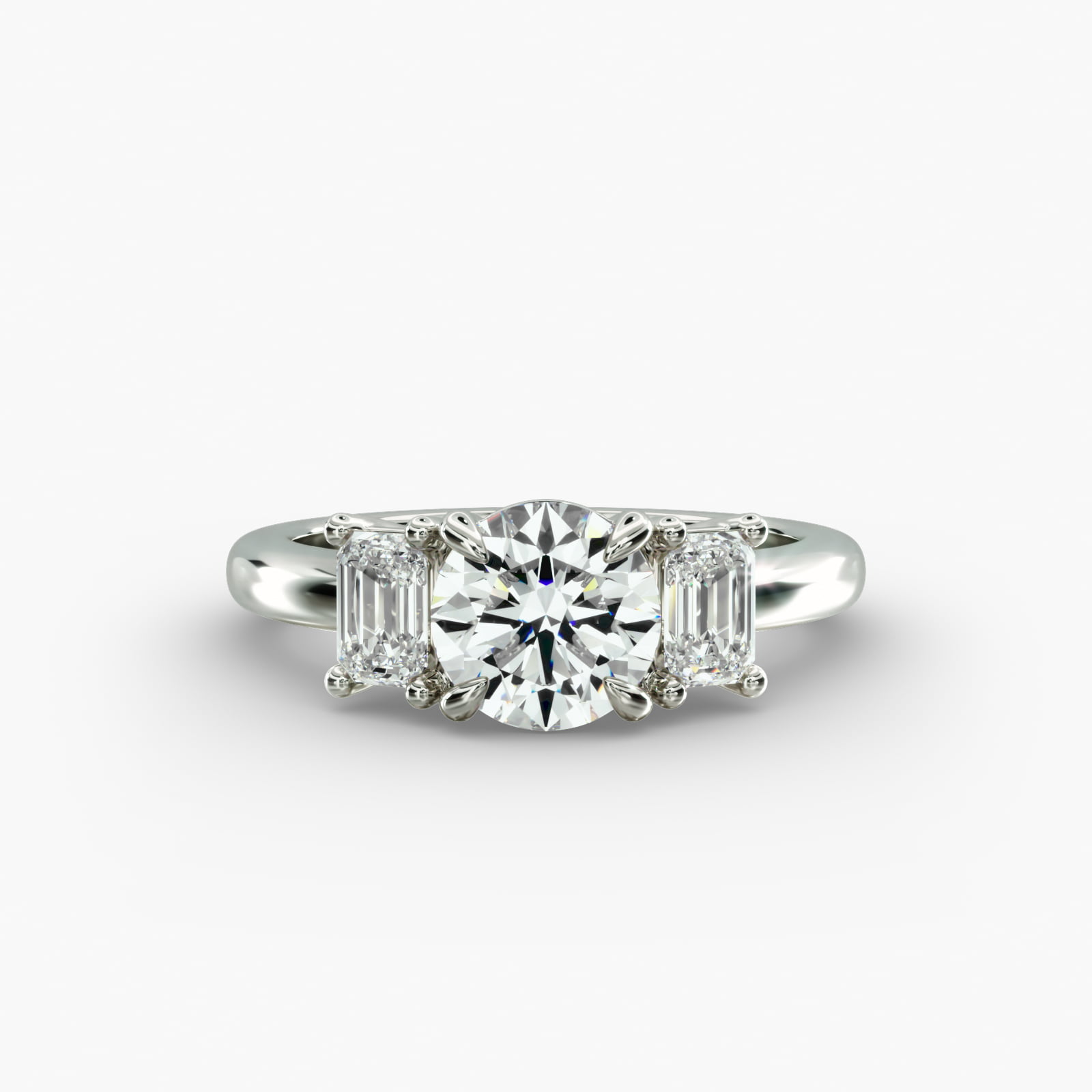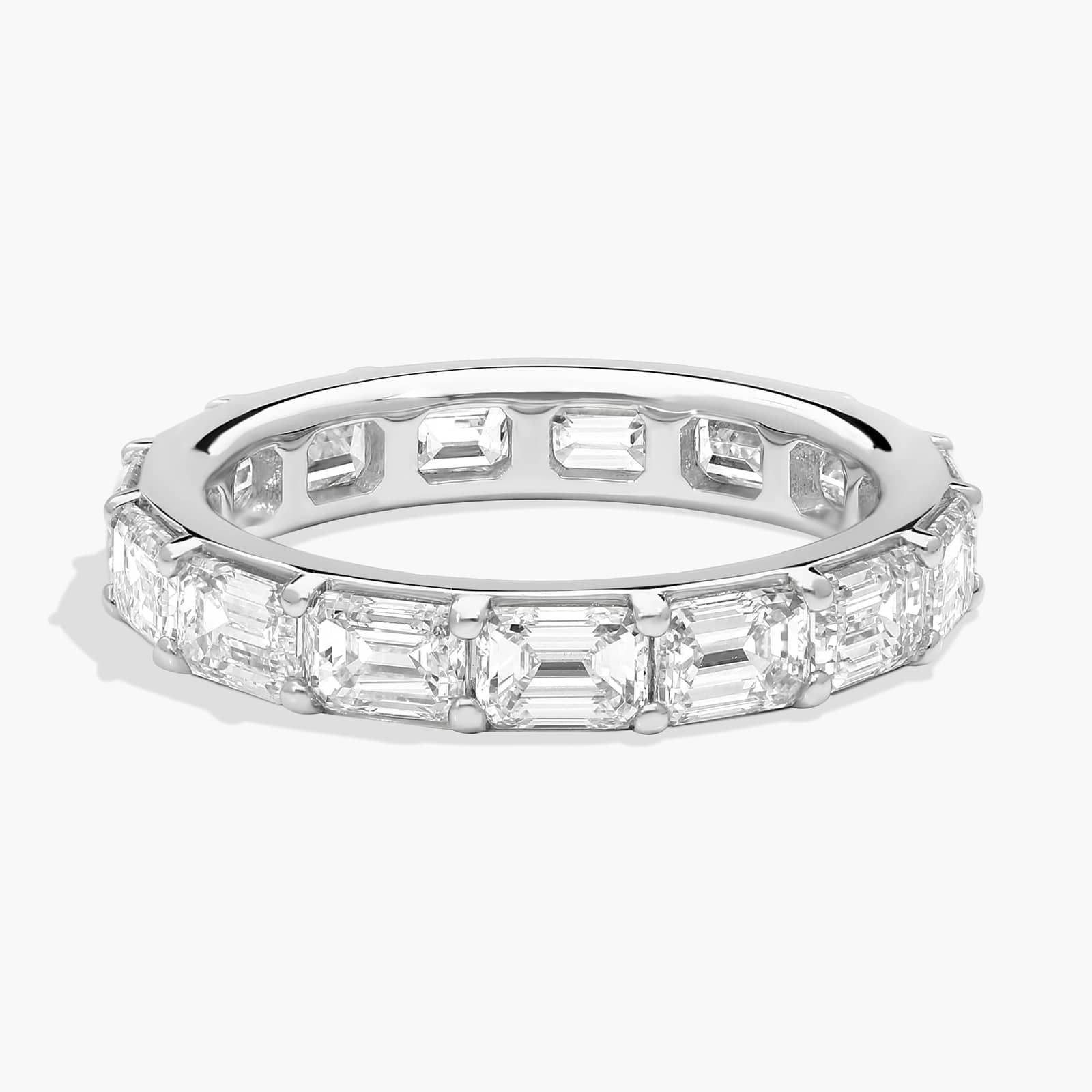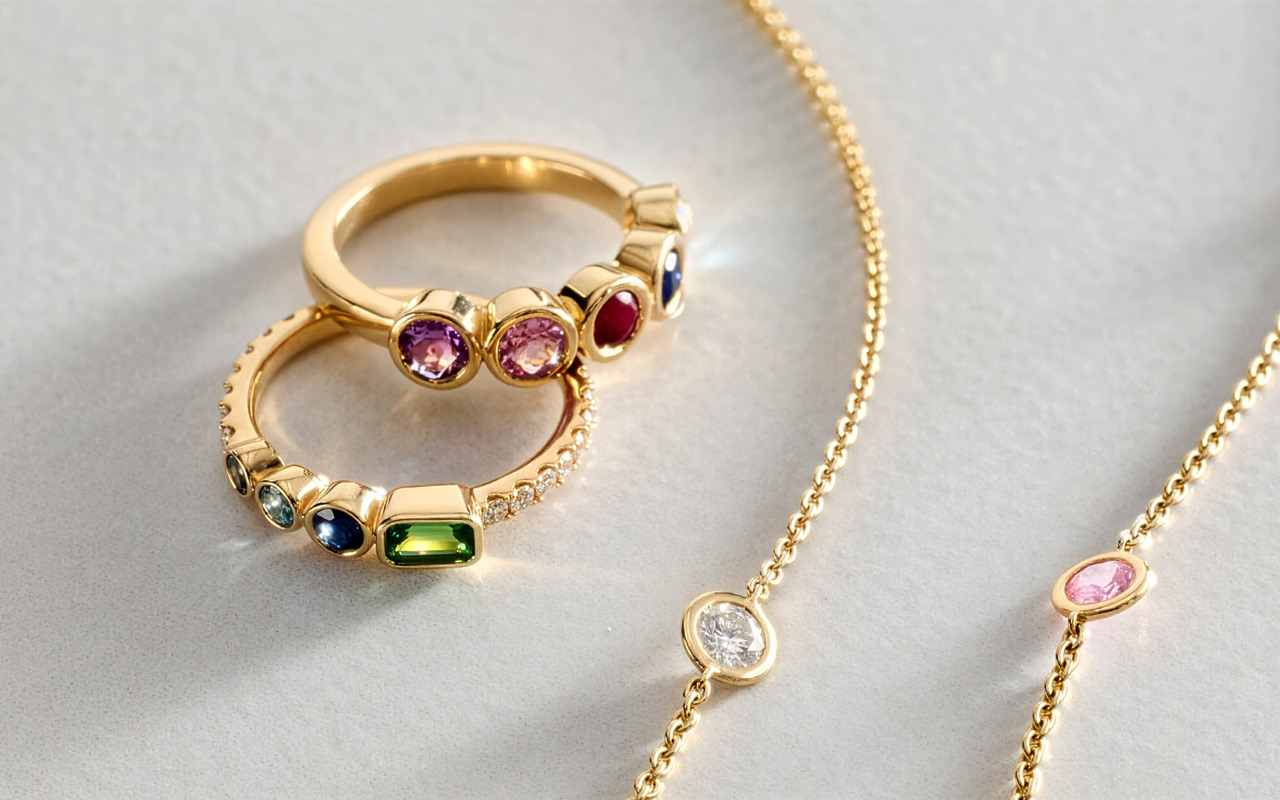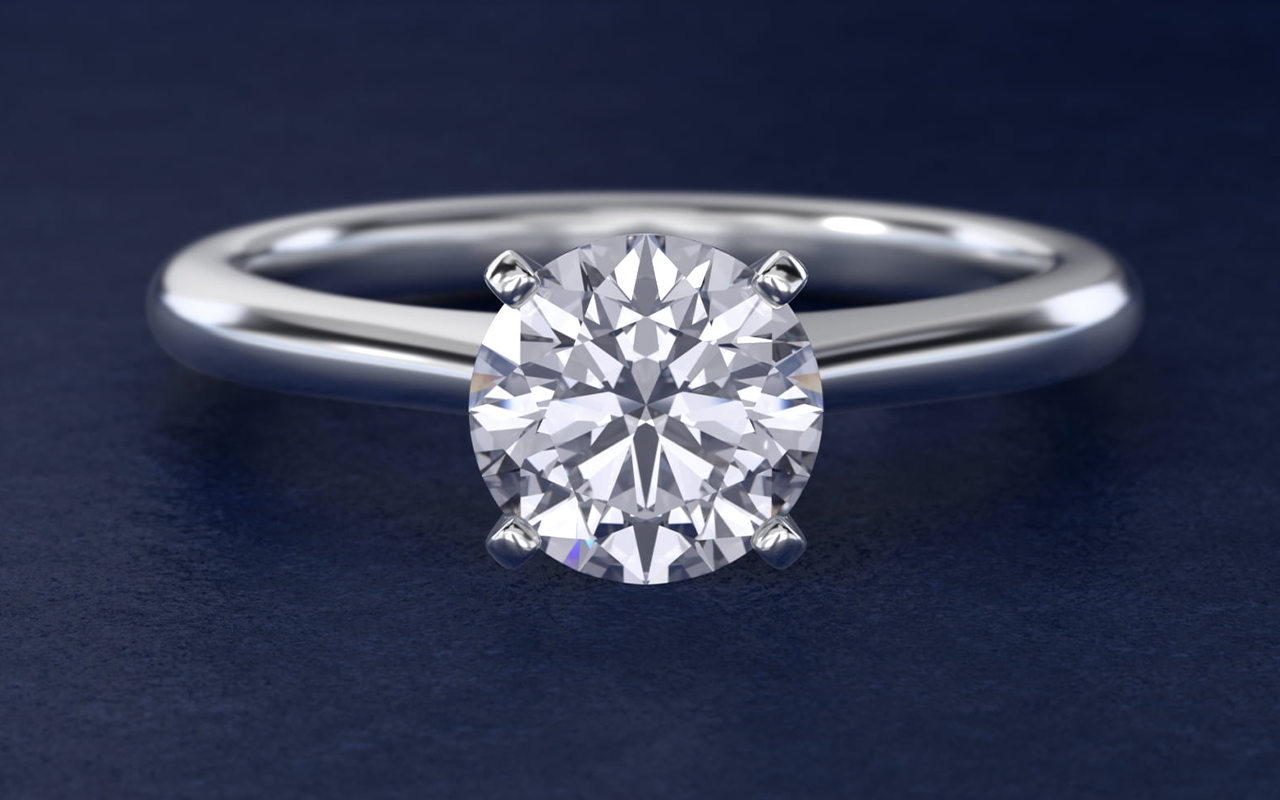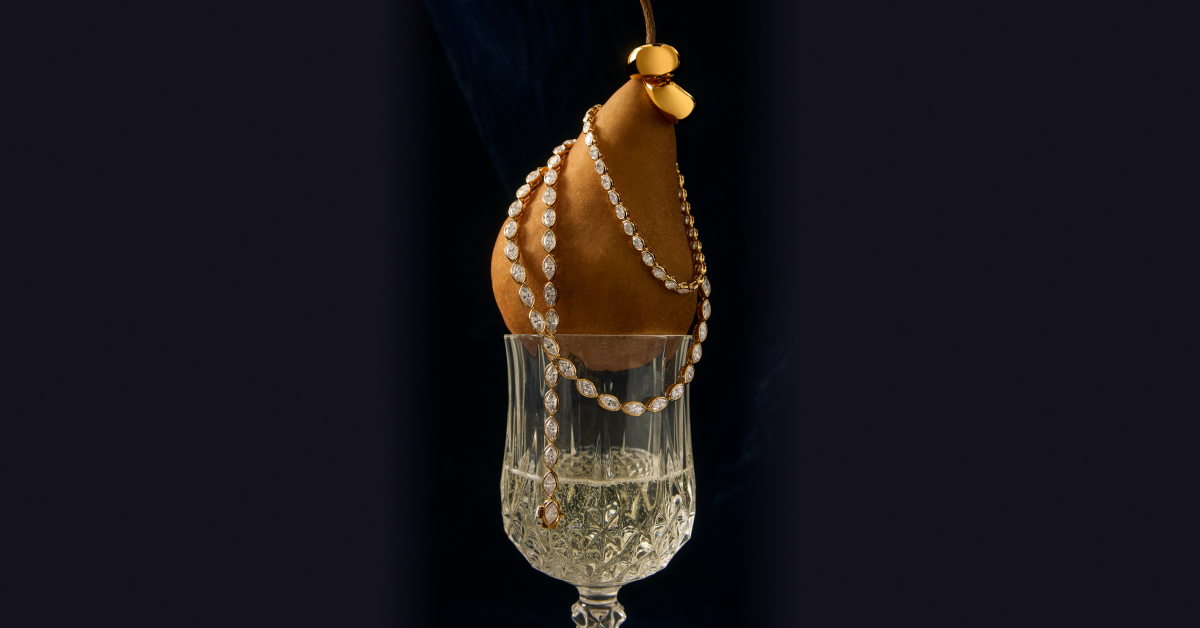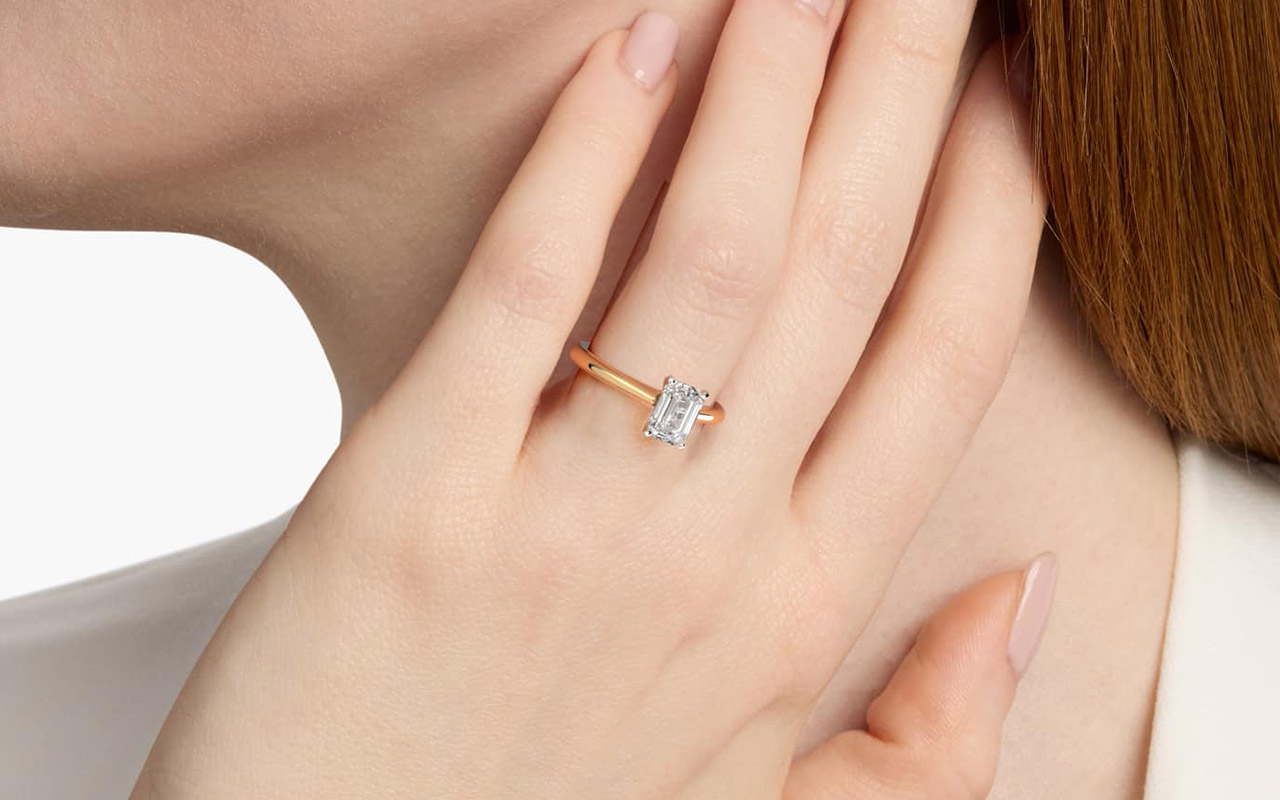
When shopping for a diamond, one of the biggest decisions comes down to shape—a choice that can completely change how your ring looks and feels. The emerald cut is loved for its sleek, refined lines, but it is also a cut that requires careful thought.
Because the open table showcases the diamond’s interior more clearly than other shapes, you’ll want to pay close attention to color and clarity before making your choice.
With the right selection, an emerald cut can offer both modern sophistication and enduring beauty. We’ll cover what you need to know about this cut below.
Key Features of Emerald Cut Diamonds
Emerald cut diamonds are known for their elongated shape, step-like facets and clean symmetry. The shape of an emerald cut diamond is typically rectangular with trimmed corners, though some stones lean square.
Unlike brilliant cuts, this shape belongs to the step-cut family, creating a subtle “hall-of-mirrors” effect instead of a glittery sparkle. The result is a refined style that highlights clarity and color, a key distinction when comparing brilliant vs. step-cut diamonds.
Below is a breakdown of the defining features of this vintage-inspired cut:
Category
Style suggestion
Ring types
Settings
Metals
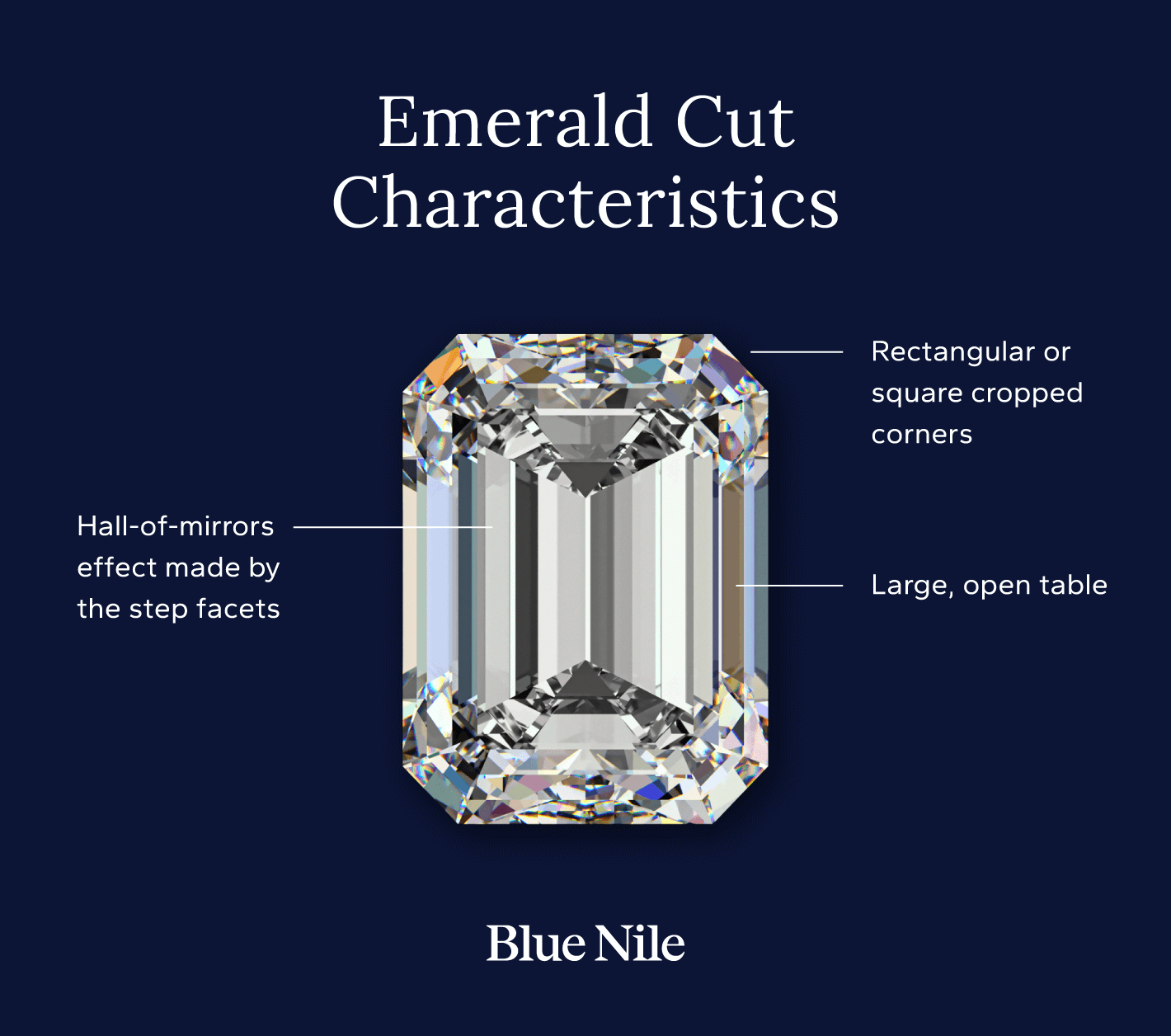
Is an Emerald Cut Right for You? Pros and Cons
Choosing the right diamond cut is a balance of style, quality and budget. Emerald cuts can offer excellent value compared to other shapes, but pricing depends heavily on clarity, color and carat weight.
While some buyers love the clean, elegant lines, others may prefer more brilliance. Knowing the pros and cons can help you decide if this cut matches your priorities.
Category
Style suggestion
Ring types
Settings
Metals
If you’re shopping for a proposal, your partner may love an emerald diamond cut if they appreciate clean lines, understated elegance and a look that stands apart from the more common brilliant styles.
How to Choose an Emerald Cut Stone
To choose the right emerald cut, you’ll need to weigh all the elements of the 4Cs of diamonds to make sure your stone looks its best. Because this cut highlights clarity and color more than sparkle, small differences in quality can have a big impact.
If you’re still deciding between shapes, our diamond shape quiz is a helpful way to determine whether the emerald cut matches your preferences. Below, we’ll walk through the most important factors to consider.
Cut
Unlike round brilliants, emerald cuts don’t have standardized cut grades from gem labs, which makes evaluating them more subjective. Instead, jewelers focus on symmetry, polish and proportions to judge quality.
Look for a well-balanced stone with clean lines and strong light return. Choosing a cut with excellent symmetry will maximize the classic hall-of-mirrors effect.
Color
Because of the large open table, emerald cuts tend to show color more easily than brilliant shapes. Even slight yellow tints are visible, especially in larger stones. For the best look, many buyers opt for higher color grades to ensure the diamond appears bright and white.
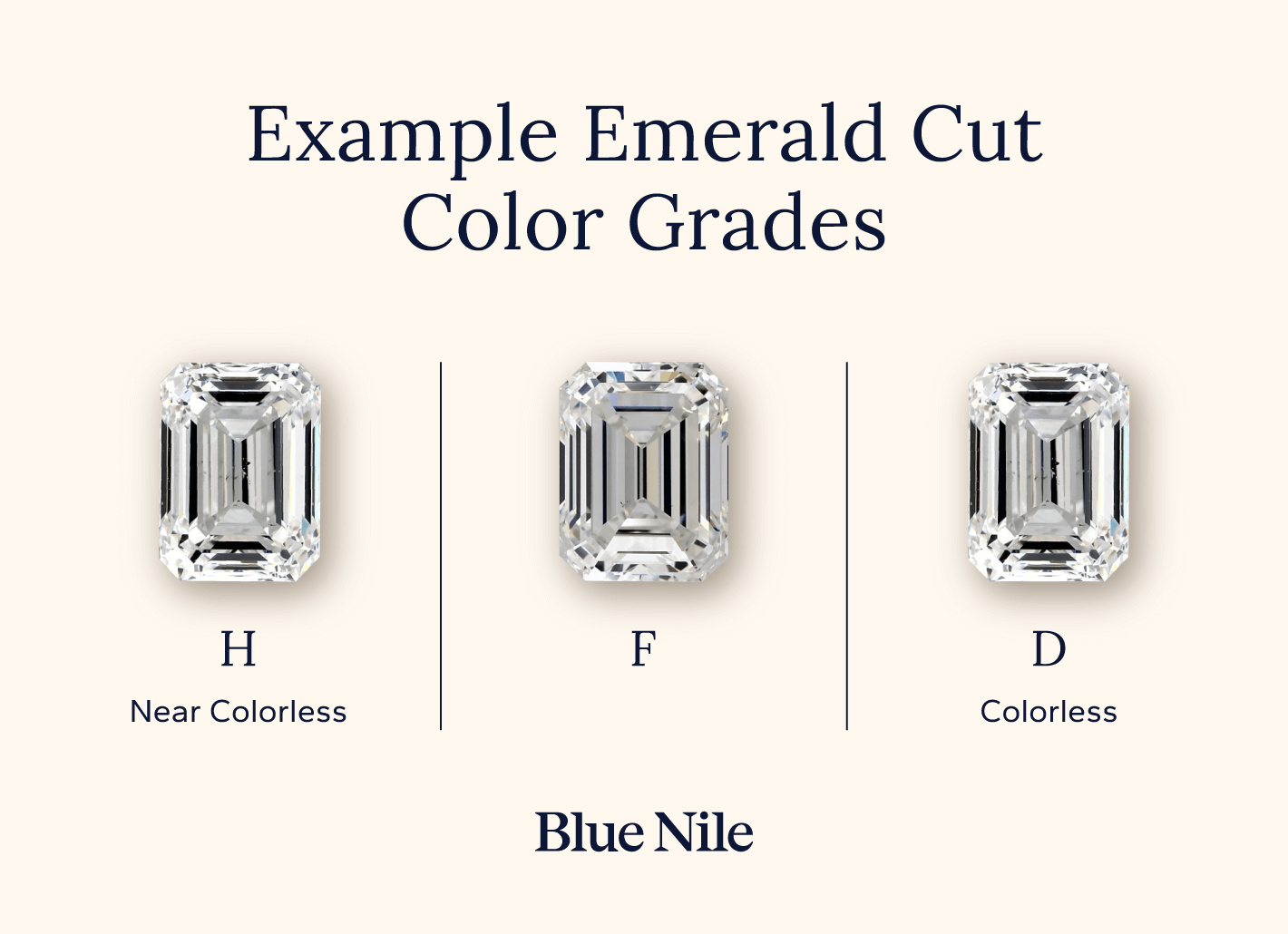
Clarity
Diamond clarity is one of the most important factors for this cut, as inclusions are easier to see through the open facets. In general, step cuts don’t mask inclusions as well as brilliant cuts. Aim for a higher clarity grade—often VS2 or better—for a diamond that looks clean and crisp.

Carat
Emerald cut carat sizes can appear larger than other shapes thanks to the elongated table and clean lines. This makes them an excellent choice if you want more visual impact for the same weight. When comparing diamond carat sizes, keep in mind that a well-cut emerald diamond may appear larger than a round diamond of equal weight.
Ratio
The length-to-width ratio greatly affects how your emerald cut looks. Ratios closer to 1.00 create a square shape, while longer ratios create a more elongated appearance. If you’re wondering what the best ratio is for an emerald cut diamond, many buyers prefer between 1.40 and 1.50 for a balanced look.
Flaws
One trade-off of this shape is that inclusions are easier to see. The large facets act like windows, putting these elements front and center. To minimize the appearance of inclusions, prioritize higher clarity and consider setting styles that naturally draw the eye to the stone’s shape.
Styling an Emerald Cut Diamond Ring
An emerald cut diamond’s clean lines make it a perfect match for both timeless and contemporary designs. Vintage lovers often gravitate toward ornate settings that highlight the stone’s Art Deco roots, while modern minimalists may prefer sleek solitaires or east-west orientations.
The key is choosing a style that enhances the diamond’s hall-of-mirrors effect without overwhelming its elegance. Whether you’re drawn to delicate details or bold simplicity, the emerald cut adapts beautifully to a range of looks.
Category
Style suggestion
Ring types
Settings
Metals
History of the Emerald Cut
The emerald cut dates back to the 1500s, when gemcutters first used step facets to reduce pressure on emeralds and prevent cracking. This technique later influenced diamonds, giving rise to one of the most enduring cuts of diamond in the world.
The style surged in popularity during the Art Deco era of the 1920s and 1930s. Its clean lines and geometric symmetry matched the bold, architectural spirit of the time, securing its place in diamond shape history. Today, the emerald cut continues to inspire both vintage and modern designs.
While newer shapes—such as the radiant cut—combine brilliant facets with angular outlines, the distinction of radiant vs. emerald cut lies in shine versus subtle elegance. One emphasizes fiery brilliance, while the other highlights clarity and refinement.
Find the Perfect Emerald Cut Diamond for Your Collection
Now that you know what an emerald cut diamond is, you can see why this shape has remained a lasting favorite. Its elegant lines, vintage charm and versatile style make it a perfect choice for an unforgettable proposal. Explore our collection of emerald cut diamonds to find a stone that reflects your partner’s personal style and story.
Frequently Asked Questions
No, emerald cut diamonds are generally less expensive per carat than other cuts, such as round brilliant diamonds. Their cutting process typically results in less rough diamond waste, which helps keep costs lower while still offering a large face-up look.
No, emerald cuts and baguette cuts are not the same. Both are step cuts, but emerald cuts have more facets, cropped corners and greater brilliance, while baguettes are simpler with straight edges and are often used as side stones.
A 1-carat emerald cut diamond can range anywhere from a few thousand dollars to over $8,000, depending on color, clarity and cut quality. Because this shape highlights inclusions more easily, higher grades in clarity and color often command higher prices.


